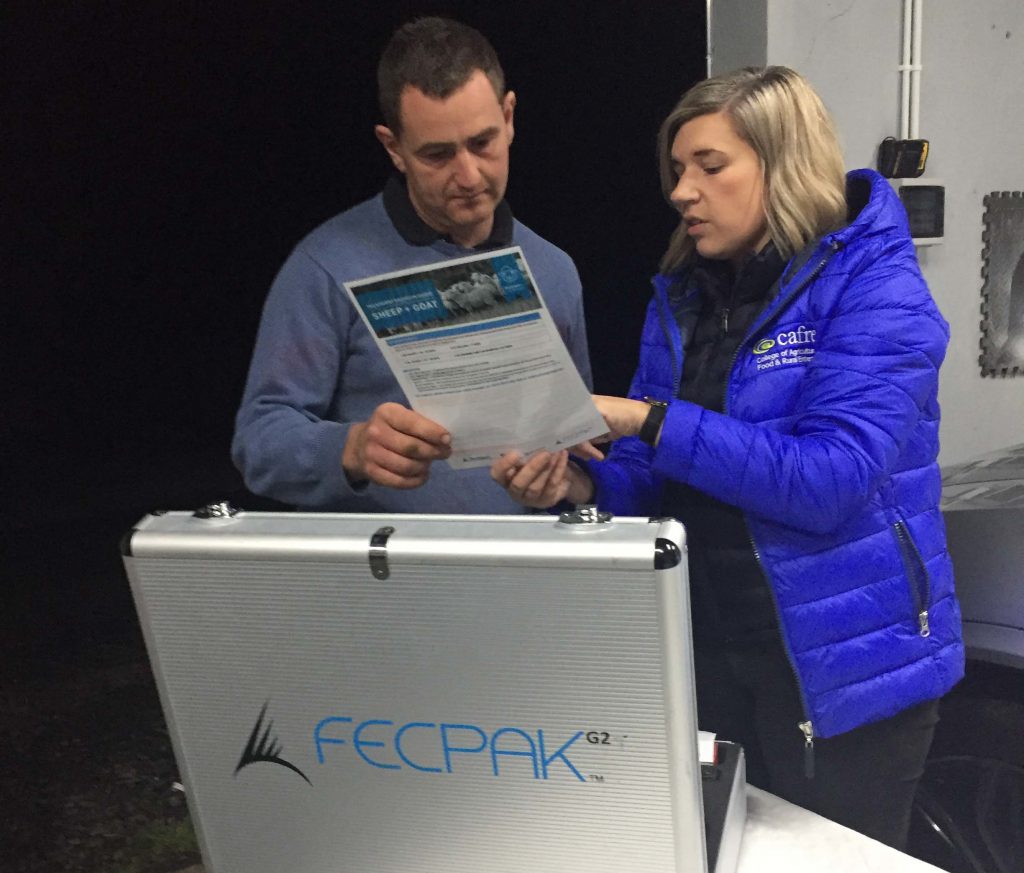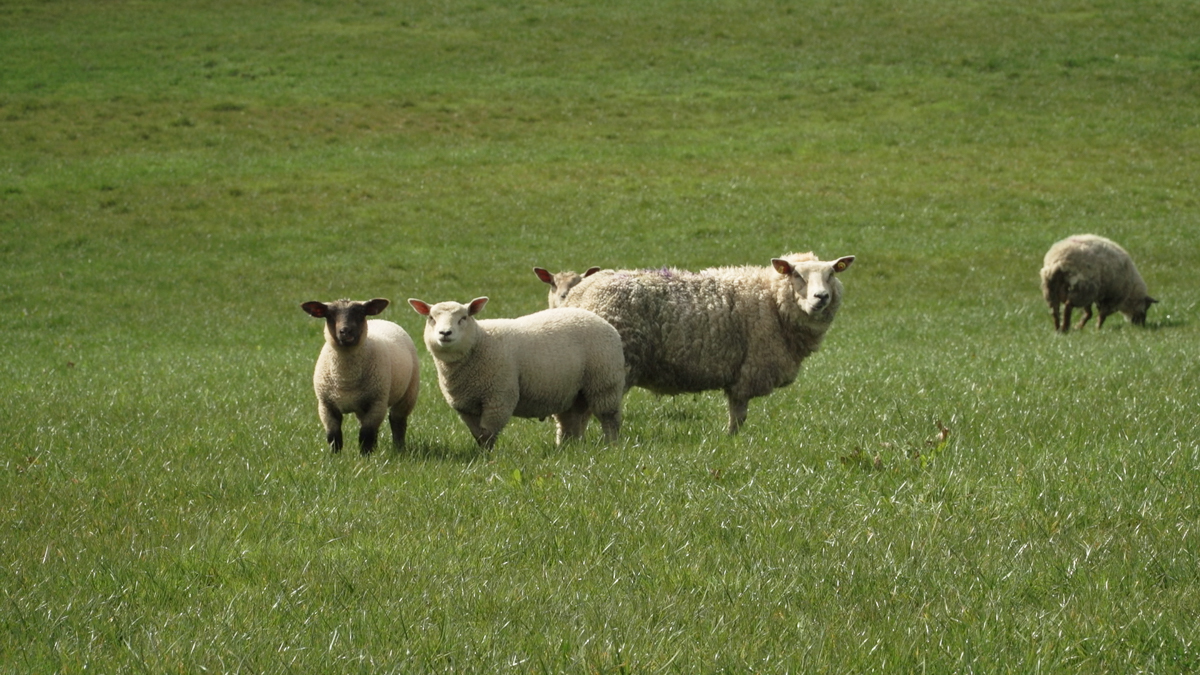Worm control is vital if you are aiming to achieve good lamb growth rates and a profitable sheep enterprise. Heavy worm burden in lambs will lead to a reduction in performance and delay development.
“Ultimately parasites cost growth and these worm infections affect performance through reduced food intake, impaired food digestion and gut damage,” said Rachel Megarrell, beef and sheep adviser at the College of Agriculture, Food and Rural Enterprise (CAFRE).
“These damaged tissues need repair which means less nutrients are left for growth.
In severe cases permanent damage can occur in the gut and this will reduce nutrient absorption; therefore, worm control is a priority to minimise the effect that internal parasites may have on lamb performance.
Worm larvae come from over-wintered larvae, eggs from ewes with a worm burden (spring rise) and eggs from lambs with a worm burden (autumn rise).
Rachel added: “Nematodirus [battus] is the big risk early in the season. The infective larval stage is very resilient and can survive low temperatures over the winter on pasture still within the egg.

Rachel Megarrell CAFRE beef and sheep adviser interprets FEC results for Sheep Business Development Group member Mark McCullough, Ballymena. Image taken before the current Covid-19 pandemic
“After a period of cold exposure the larva hatches once the maximum environmental temperature exceeds 10° over a period of several days.
“In order to understand Nematodirus it is important to consider the population dynamics in that it is a lamb-to-lamb disease with the eggs laid in one season becoming infective and hatching the following season.
“There will be variation from farm-to-farm and even field-to-field, so sheep farmers are urged to assess their risk based on the history of the field.”
How to know when to give first worm dose to lambs?
It is recommended that the Sustainable Control of Parasites (SCOPS) protocols and guidance are followed with regard to choice of product for worms alongside the timing of administration referring to the SCOPS forecast for Nematodirus risk through the early grazing period.
The forecast predicts the hatch date for Nematodirus based on temperature data from 140 weather stations across the UK.
The SCOPS forecast is a useful management tool. Each dot on the map represents a weather station, choose the dot closest to your farm and zoom in to get information related to your area. This will provide the appropriate risk level and an indication of when hatching is predicted to start.
For further information on the SCOPS principles, visit the SCOPS website.
Consider the main risk factors prior to dosing:
- Are the lambs old enough to be eating a substantial amount of grass?
- Are different aged groups of lambs being mixed together?
- How do the lambs look? Are they clean and thriving?
- What is the previous grazing history of the field that they are in? For example ‘low risk’ pasture would be a field that only grazed cattle last year.
Best practice to follow when using wormers
It is important to dose animals based on weight. Do this by weighing a sample of the group and then set the dose rate based on the heaviest animals in the group.
If there is a wide range of weights, consider splitting the group and weighing the heaviest in each group. Under-estimation of weight is a big problem and leads to issues arising from under-dosing.
Ensure that the dosing technique is correct. Always follow the manufacturer’s advice on the use of wormers and ensure that the drenching gun is working effectively.
Be aware of anthelmintic resistance
There are a number of factors which influence the rate at which anthelmintic resistance develops within a worm population:
- Frequency of treatment;
- Use of one family of anthelmintic treatment year-on-year;
- Size of the in refugia populations. You want to avoid all of the population of worms being exposed to a drench to both slow resistance development and prolong drench life;
- Movement of livestock;
- Under-dosing – this kills a lower percentage of worms in the sheep;
- Narrow spectrum treatments should be used whenever possible to avoid unnecessary exposure to a wormer, increasing the selection pressure for anthelmintic resistance – e.g. the use of a combination fluke and worm product should be avoided when fluke is the primary target.
Other causes of anthelmintic failure:
- Dosing with insufficient anthelmintic due to poorly maintained dosing equipment;
- Failure to follow the manufacturer’s instructions;
- Not storing the products correctly;
- Using products beyond their ‘use by’ date;
- Mixing anthelmintics with other products.
Rachel Megarrell continued: “Adopt an effective quarantine strategy to minimise the introduction of new or resistant parasites.
“Don’t drench and move onto clean pasture as this is very selective for resistance; if possible return the sheep back onto their old field for a few days.
“As we move further into the season, optimise the use of Faecal Egg Counts (FEC). Using this method allows farmers to make an informed decision with regard to the need to dose.
The results are presented as ‘eggs per gram’ (epg) of faeces and the number of eggs is an indication of the number of adult worms in the gut of the sheep.
“Its use has also proved beneficial on farms with suspected resistance to Group 1-Benzimidazoles (1-BZ) white wormer products. With a steady increase being identified in resistance to white products this has become more important in recent years.
“The fact that there is emergence of parasites that are resistant to some of the compounds available on the market suggests that the intensive use of anthelmintic products is not a sustainable approach.
“Regular monitoring combined with the use of FEC can help to ensure that we are preventing the damage that worms can cause to lambs, it is important, however, to remember that FEC is a tool to help management not to replace it.
“Finally, aim to find a balance between effective worm control and reduction in selection for resistance. Seek to maintain a worm population susceptible to wormers by reducing treatment frequency or by only treating the most susceptible individuals in a flock.
If in doubt or you have concerns about the health of your flock then veterinary advice should be sought immediately.
“In the current Covid-19 situation, plan ahead with your supplies for all inputs required on the farm, there is no need to panic buy,” Rachel concluded.
A video has been produced and is available to view on the CAFREtv channel highlighting practical steps that farmers can take to manage work burdens in sheep. The video can be seen below.

